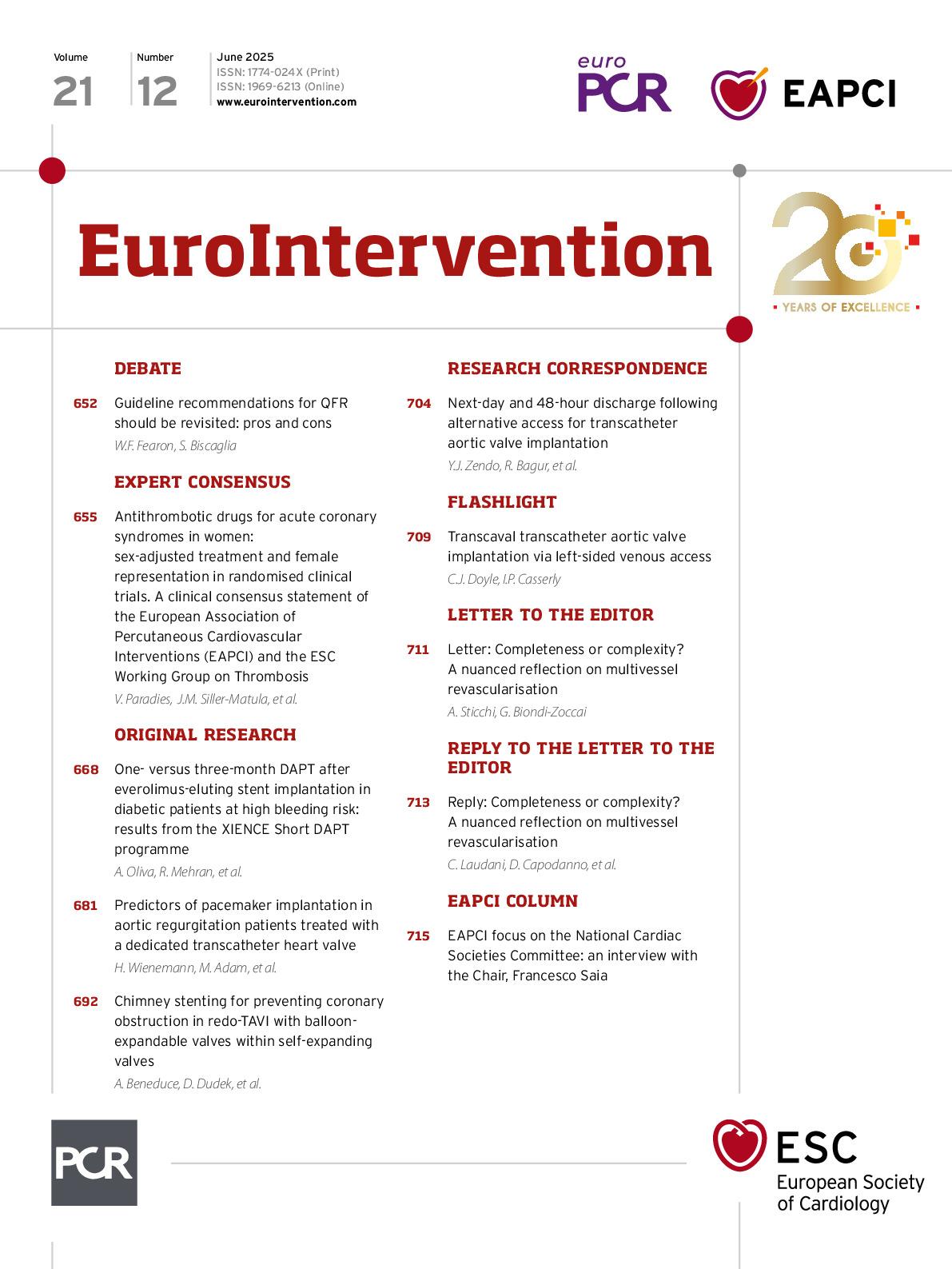Abstract
Background: The JenaValve Trilogy System (JVTS) is the only dedicated transcatheter heart valve system approved for treating patients with aortic regurgitation (AR). Recently, several studies have revealed high rates of permanent pacemaker implantation (PPI) exceeding 20% in patients with AR.
Aims: The aim of this study was to evaluate the incidence and risk factors for new PPI after transcatheter aortic valve implantation (TAVI) with the JVTS.
Methods: This retrospective multicentre registry included 141 patients without prior PPI who underwent transfemoral TAVI with the JVTS. Comparative analyses were performed regarding baseline and procedural parameters between patients with and without new PPI at discharge. Logistic regression models were fitted to identify predictors of PPI.
Results: The median age of patients was 81 (interquartile range [IQR] 76-85) years, 41% were female, and the median European System for Cardiac Operative Risk Evaluation (EuroSCORE) II was 3.6% (IQR 2.0-6.4). All patients presented with ≥moderate AR. At discharge, 34 patients (24.1%) required a new PPI. Pre-existing first-degree atrioventricular block and right bundle branch block were identified as independent predictors of new PPI. Anatomical characteristics, including annular and left ventricular outflow tract perimeters, were not predictive. Procedural factors such as implantation depth and valve oversizing were also not statistically different between patients with or without new PPI.
Conclusions: Overall, 24.1% of patients undergoing TAVI with the JVTS required a new PPI. While rates of new PPI were strongly associated with pre-existing first-degree atrioventricular block and right bundle branch block using the JVTS, no modifiable risk factors were identified.
Sign up for free!
Join us for free and access thousands of articles from EuroIntervention, as well as presentations, videos, cases from PCRonline.com

